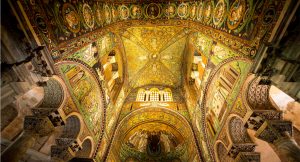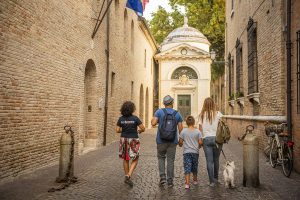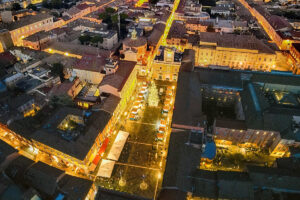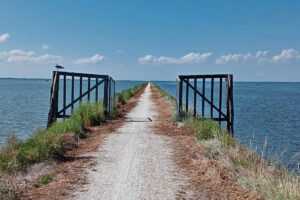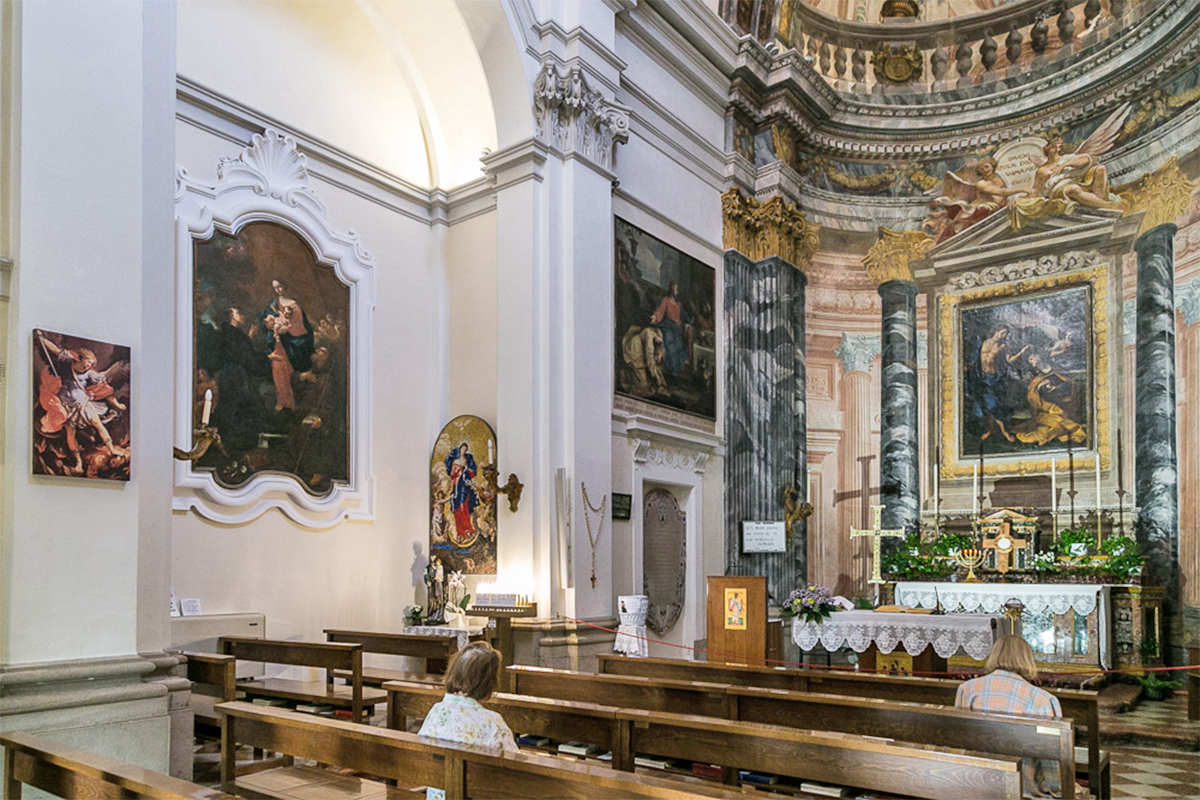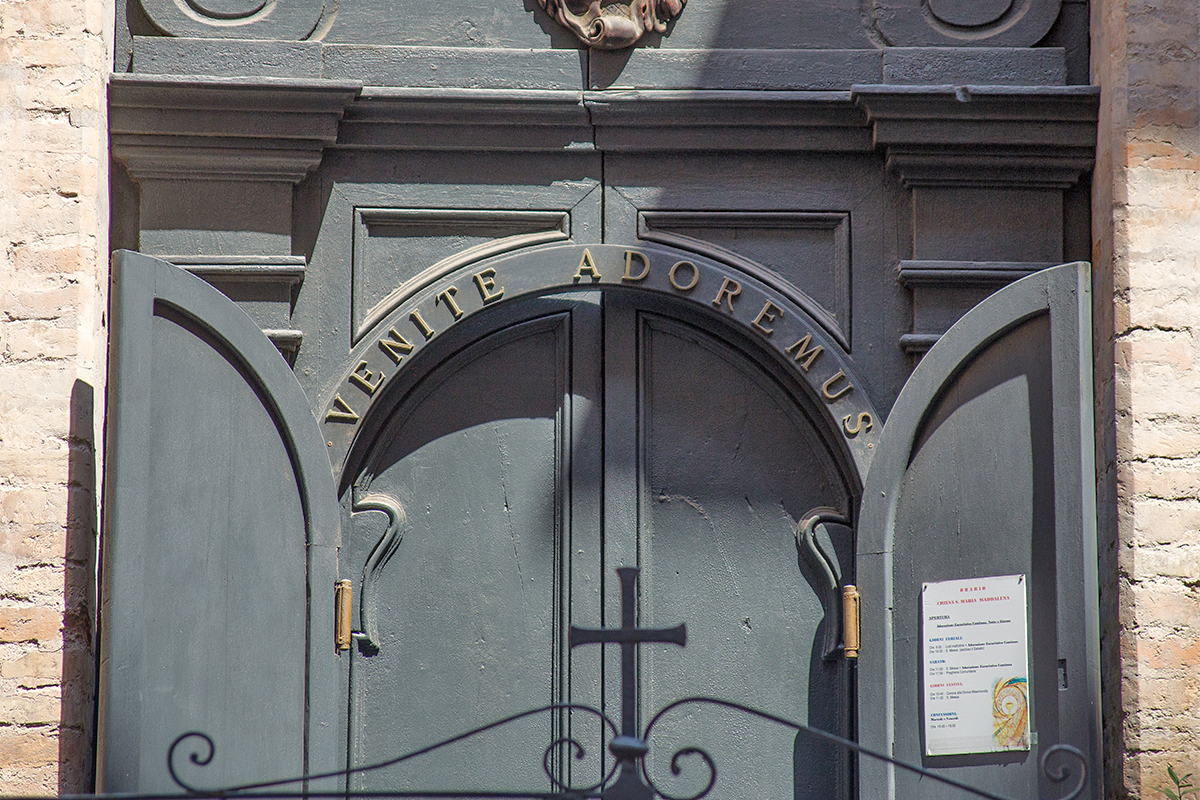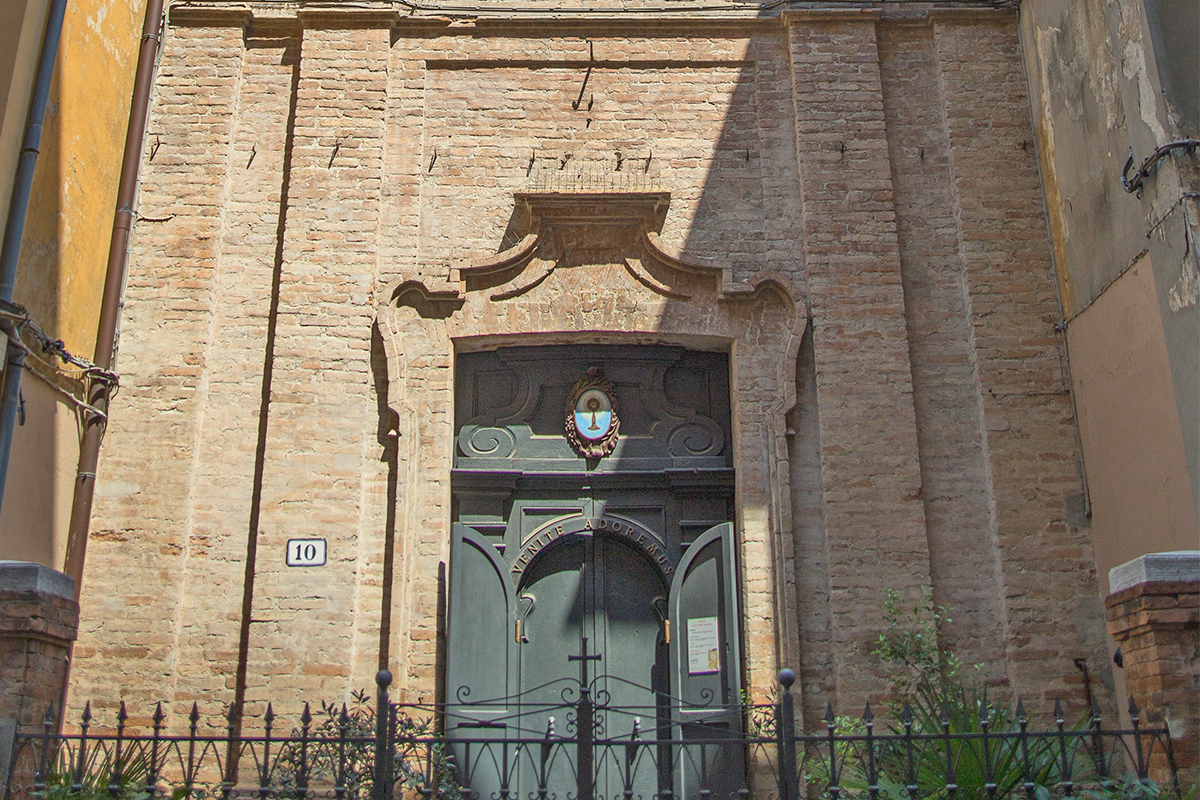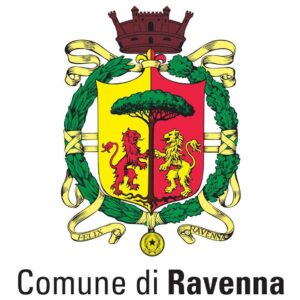Hidden between the facades of the buildings in Via Corrado Ricci, the CHURCH OF SANTA MARIA MADDALENA is a small religious building located in the heart of the city.
It was built in Baroque style by Antonio Serri between 1748 and 1750, on a design by the Camaldolese priest Fausto Pelliciotti da Lucca (?-1752), who also designed some of the furnishings in the Classense Library.
The building was built on, or near, a previous church that was named Santa Maria in Luminibus or in Luminaria in some documents dating back to 1076 (Bishop Wibert’s emphyteusis).
Structure and interiors
The church is preceded by a small courtyard and is above street level.
With reference to Mary Magdalene, the church is also known as “dell’Adorazione” (of the Adoration).
The brick façade then opens onto a small interior space with a single nave, and beside Baroque decorations, the church also features paintings by the leading 18th-century painter, Andrea Barbiani (1708-1779) – such as Sant’Apollinare and San Romualdo, The Virgin, Anthony of Padua and Francesco di Paola – whose brother Domenico Barbiani (1714-1777) collaborated on the design of the façade and Baroque apse.
There are also 18th-century paintings specifically dedicated to the figure of Mary Magdalene, such as the ones by Domenico Corvi (Mary Magdalene at the Sepulchre and Mary Magdalene and Jesus in Martha’s House), Marcello Leopardi (Mary Magdalene comforted by the Angels), Tommaso Sciacca (Mary Magdalene in the House of the Pharisee) and Filippo Pasquali (The Saviour Appearing to Mary Magdalene as a Gardener).
The main altar is decorated with a variety of oriental marble, including a peacock’s-eye flowering alabaster, made from a column from the Mausoleum of Theodoric. The ciborium resting on the altar was made by Giulio Costa.
